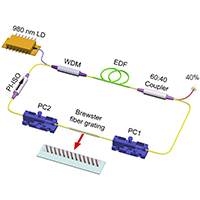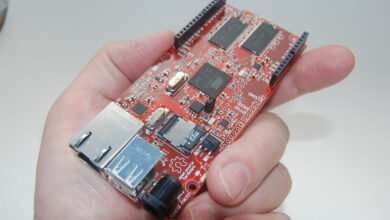Maximizing Productivity: Integrating Automation with Fiber Laser Systems

In the realm of modern manufacturing, efficiency and precision reign supreme. The quest for higher productivity has led to innovations in automation, and one technology that seamlessly integrates with this trend is fiber laser systems. Fiber laser technology, known for its speed and accuracy, has become a linchpin in manufacturing processes. When combined with automation, it unleashes new levels of productivity. In this article, we will explore how the integration of automation with fiber laser systems is transforming industries and redefining the way products are made.
The Power of Fiber Laser Technology
Before delving into the role of automation, let’s grasp the significance of fiber laser technology in manufacturing. Fiber lasers are high-powered devices that generate an intense, concentrated beam of light using optical fibers. This laser beam can be precisely controlled and focused to perform a multitude of tasks, such as cutting, welding, engraving, and, of course, marking.
The Role of Fiber Laser Engraving
Fiber laser engraving is a particularly crucial application that finds its place in various industries, including automotive, electronics, aerospace, and medical devices. It involves etching or engraving permanent marks, such as serial numbers, barcodes, and logos, on a wide range of materials, including metals, plastics, and ceramics. The advantages of fiber laser engraver are clear: it offers high-speed, high-precision, non-contact marking that is durable and resistant to wear and tear. This makes it indispensable in industries where traceability, quality control, and product identification are paramount.
The Synergy of Automation
Now, let’s shift our focus to automation. In manufacturing, automation involves the use of machines, robots, and computer systems to streamline and control processes, ultimately reducing human intervention and increasing efficiency. When automation and fiber laser systems converge, the results are remarkable:
1. Enhanced Efficiency
One of the most evident benefits of integrating automation with fiber laser systems is the significant boost in efficiency. Automated processes can operate around the clock, eliminating downtime associated with human shifts and breaks. This 24/7 productivity translates to faster production cycles and, consequently, higher output.
2. Precision and Consistency
Automation ensures that tasks are performed with unwavering precision. When fiber laser marking, for instance, is automated, you can expect consistent quality in every mark, whether it’s the first or the thousandth. This level of precision is essential in industries where even the slightest deviation can lead to defects or safety issues.
3. Reduced Labor Costs
Automating repetitive and labor-intensive tasks with fiber laser systems not only accelerates production but also reduces labor costs. This cost-saving aspect makes automation an attractive proposition for manufacturers aiming to stay competitive in today’s market.
4. Flexibility and Customization
Automation doesn’t equate to rigidity. Modern manufacturing processes demand flexibility and the ability to adapt to changing requirements. Fiber laser systems integrated with automation can swiftly switch between marking different products, making customization more accessible than ever.
5. Data and Traceability
Automation also enhances data capture and traceability. Every mark made by a fiber laser system can be logged and tracked, ensuring comprehensive traceability—a vital factor in industries where product history and quality control are paramount, such as aerospace and medical devices.
Applications Across Industries
The integration of automation with fiber laser systems is revolutionizing a multitude of industries:
- Automotive: Automated laser marking ensures VINs and part numbers are consistently and accurately marked on vehicles and components.
- Electronics: PCBs, connectors, and microchips receive intricate markings, improving traceability and quality control.
- Aerospace: Safety-critical components and aircraft parts are marked with precision, ensuring durability and traceability.
- Medical Devices: Surgical instruments, implants, and medical equipment carry permanent markings for patient safety and regulatory compliance.
- Packaging and Branding: Automation with fiber laser marking creates aesthetically pleasing, customized packaging and branding.
In conclusion, the integration of automation with fiber laser systems is reshaping the landscape of modern manufacturing. The synergy of speed, precision, and efficiency offered by fiber laser technology, coupled with the tireless work ethic of automation, results in maximized productivity and enhanced product quality. As industries continue to evolve, the partnership between automation and fiber laser systems will undoubtedly play a pivotal role in shaping the factories of the future. Fiber laser marking and automation are indeed the dynamic duo that drives manufacturing into a new era of innovation and productivity.
Apart from that, if you want to know about Role of data analytics in transforming BFSI, then please visit our Tech Category.


